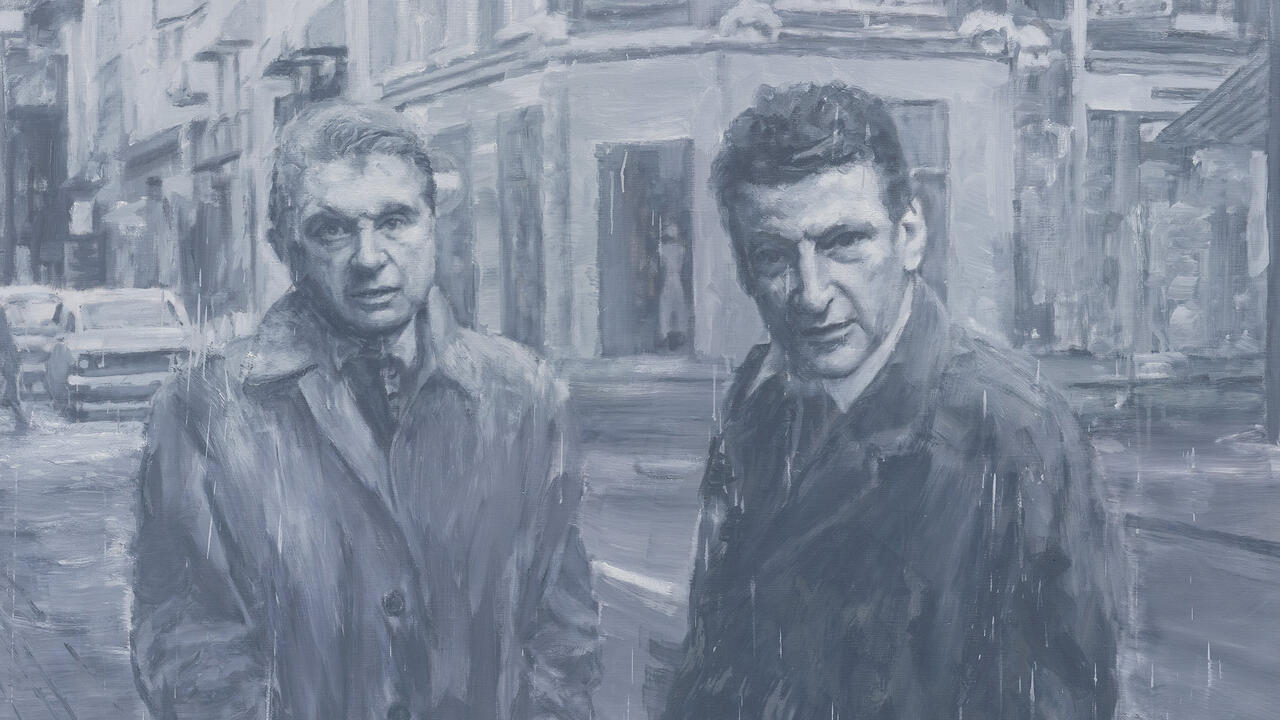Dara Birnbaum
Wilkinson Gallery, London, UK
Wilkinson Gallery, London, UK

Inserts, wipes and two-shots – since the late 1970s, Dara Birnbaum’s video work has singled out this often unnoticed lexicon of editing and broadcasting techniques, continuing a critique of televisual truth first explored by, among others, Nam June Paik and Wolf Vostell. Despite having been included in several high-profile museum shows – most recently ‘The Pictures Generation’ at New York’s Metropolitan Museum of Art, ‘First Generation: Art and the Moving Image 1963–1986’ at Madrid’s Reina Sofia in 2007 and ‘Video Acts’ at P.S.1 Contemporary Art Center, New York, in 2002 – Birnbaum has received little attention in the UK. Her solo show at Wilkinson Gallery – remarkably the New York-based artist’s first one in this country – was an abbreviated version of a major retrospective that began at Stedelijk Museum voor Actuele Kunst, Ghent, and will tour to Museu Fundação Serralves, Porto, in March. While space limitations meant that some of her best-known pieces (such as Technology/Transformation: Wonder Woman, 1978) were omitted, and that the 1980s – a decade in which Birnbaum’s sampling techniques, co-opted by MTV and popularized by hip-hop, trickled into the mainstream – were completely ignored, this was a welcome mini-survey.
Though overdue, this recent institutional interest puts Birnbaum in an intriguing position; in a conversation with Cory Arcangel, she claimed to have ‘initially avoided galleries like the plague’. Birnbaum preferred instead to insert her work into nightclubs, independent art spaces or wherever sound-systems and projectors were available. First shown at the Kitchen in New York, (A) Drift of Politics: Two Women Are Active in a Space (1978) comprises a single half-hour episode of the Happy Days-style US television series Laverne & Shirley (1976–83), the most popular sitcom of its time, which the artist condensed to five minutes by selecting only the two-shots (that is, a shot of two people looking out at the viewer) in which the title characters appear. As with much of Birnbaum’s early work, the isolation of this production convention makes its use seem jaw-droppingly coercive: stripped bare to a couple of desperate women on the look-out for a good man, Laverne & Shirley starts to look rather sinister.
On the gallery’s upper floor was the well-known Kiss the Girls: Make Them Cry (1979), which comprises two synchronized monitors placed on flight-cases, one set back slightly from the other. Manipulated off-air footage of another then-current television programme, the quiz show Hollywood Squares, is shown, in which nine celebrities – ‘iconic women and receding men’, as Birnbaum referred to them – are seated in a tic-tac-toe board. Within this gridded studio set, the contestants rehearse a kind of folksy normality for the camera, which amounts to a weird litany of grimaces and rictus grins. Fixating on the hidden agendas of broadcasting is where Birnbaum is most cutting; indeed, her incisiveness is comparable to Dan Graham’s critical essays on television (he was an early supporter of her work).

The exhibition then jumped 13 years to the early 1990s, a period which marks a shift in Birnbaum’s work from using TV ‘on itself’ (as she put it) to the political possibilities of distribution and reportage. Operations: December 16-17-18 (1998), for example, which consists of collaged news reports on Operation Desert Fox in Iraq, was originally broadcast as a radio play on Swiss National Radio. However, the artist’s recent move to real-world politics is not always successful: comprising 12 American flags hung from the ceiling, on the opposite side of each are flags from US-entangled nations, Occupied Territories is jarringly heavy-handed for an artist known for her subtlety. Elsewhere, two other works had the cold elegance more usually associated with the better-known Pictures artists such as James Welling and Jack Goldstein. In Quiet Disaster: Fire; Water; Looking Back (1999), three glossy, circular prints of comic-book characters glance – á la Richard Prince – to the left, while Computer-assisted Drawings: Proposal for Sony (1992–3), 16 technical renderings on Perspex of an overhead projection unit, hinted at a less-well-explored interest in the physical structure of the viewing space.
The stratified entertainment system that Birnbaum – who was known as a ‘pirate’ in the late 1970s – aimed to unpick has now all but broken down, with viral distribution and collective authorship used by corporations and bedroom filmmakers alike. Contemporary manipulation of popular imagery is both less shocking and incomparably simpler to produce than it was 30 years ago; we encounter no-budget videos – which receive millions of hits – with more technical proficiency than Kiss the Girls … on YouTube every day. (Interestingly, although examples weren’t included in this show, Birnbaum has recently begun using YouTube.) Although mash-ups have developed into a vernacular of their own – perhaps the dominant pop-cultural vernacular of the last decade? – the strength of Birnbaum’s early work remains largely undiminished.
























